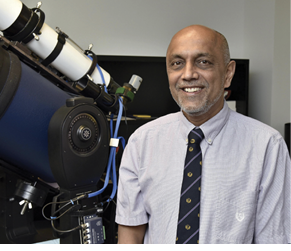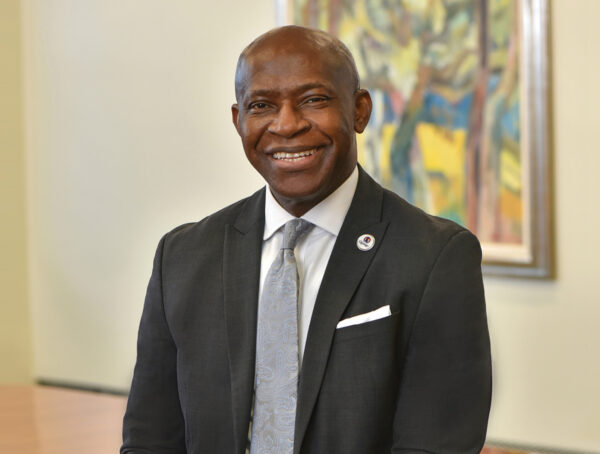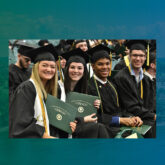Kenny Roffo ’17 fell in love in 11th grade. He thought he had experienced this kind of lifelong passion before. First when he was 8, then when he was 10 and even early on in his teenage years.
But when that tennis ball rolled off the science table and missed the paper target that he had placed on the floor below, he knew he had met his match.
“I was horribly off and I just couldn’t understand,” Kenny remembered. “Why am I so off? My calculations were perfect.”
He rationalized that it didn’t work because his high school physics assignment hadn’t taken into effect more complicated factors like friction and air resistance.
“So, of course, it’s going to be wrong,” he said. “How do I actually get it right? I wanted to learn more. I know I’ll get a physics major and I’ll learn!”
That was the start of his love of physics, putting to rest his childhood infatuations with archeology, cardiovascular surgery and even rock guitar.
Today, as a software engineer in NASA’s Jet Propulsion Laboratory (JPL) located in Pasadena, Calif., his calculations are much more precise. They have to be, as his work is mission critical, not only to gather new scientific data on missions to Mars and beyond, but also to the humans who sometimes have invested decades of their lives working toward the mission.
He was part of the team who worked on NASA’s 2018 Interior Exploration using Seismic Investigations, Geodesy and Heat Transport (InSight) mission, which sent a robotic lander to study the deep interior of the planet Mars. He helped develop the tools to operate the spacecraft.
“I was not prepared for how emotional I would get that day,” he said. “But when InSight landed … I actually began to tear up, and the intensity of the emotions I felt was something I’ll never forget. To put something on another planet, it’s just unbelievable. How few humans get to contribute to something like that, and I got to be one of them. It still puts a smile on my face when I think about it.”
Kenny said he never expected that he would ever be able to even land an interview, let alone a job at NASA, and he credits his experiences and connections forged at SUNY Oswego for helping to give him the chance.
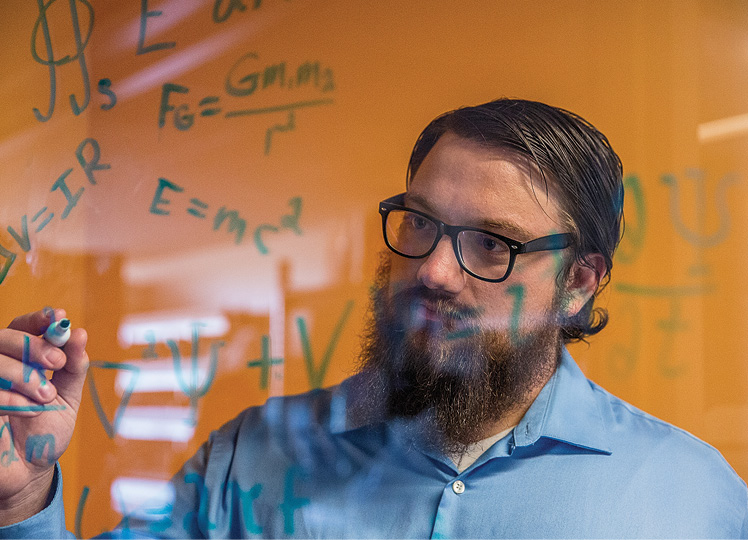
Exploring New Frontiers
As a triple major in math, physics and computer science, Kenny took advantage of all the opportunities to learn that he could find on and off campus. That included tutoring and serving as president of the Math Club and strengthening the club’s membership enough to host the Mathematical Association of America Seaway Section Conference at Oswego.
“Math Club had completely lost leadership and was fading, but Kenny joined the club and brought strong leadership and an appreciation for mathematics back,” said Dr. Elizabeth Wilcox, associate math professor and the club’s faculty advisor. “He organized different events, like board game nights and movie nights, as well as talks by faculty members, to draw more students in. Kenny’s efforts really revitalized the club!”
Kenny also took advantage of several experiential learning opportunities, including a 6-week internship as a research assistant at the University of Delhi in India and a summer internship at the Max-Planck Institute for Solar System Research in Goettingen, Germany.
“Kenny is a very optimistic, enthusiastic person who always looks on the positive side of things,” said Dr. Shashi Kanbur, a physics professor who helped create the pipeline to these internship opportunities for Kenny and other students. “He is very focused and determined, and is a hard worker.”
When it came to applying for an internship at NASA, Kenny took to heart everything that NASA Planning and Execution Software Systems Group Supervisor Diane Conner shared during her guest presentation in his Oswego physics class taught by Dr. Kanbur.
“She gave us advice on how to build up your resume to get people’s attention and how to stand out during an interview,” he said. “Be memorable.”
So, Kenny brought his Rubik’s cube and during his interview, he solved it in under 30 seconds. (The trick, he said, is looking carefully at the cube, planning each step needed to solve it and then memorizing the order of steps before starting.)
“It’s not that hard once you figure out the patterns and the method you’re going to use, but more importantly, it shows I can accomplish what I set out to achieve,” he said. “I can put a lot of effort into something and get good at it if I put my mind to it. Everything that seems really hard isn’t as hard as people seem to think it is. It’s usually that the person doesn’t know anything about whatever it is.”
It worked. While at “Mug Night” at Old City in Oswego, he received an email from JPL to which he responded immediately and agreed to a phone interview the following morning.
“Oh my gosh, my foot is in the NASA door!” he said to his friends.
During the interview, Kenny learned that they were looking for someone who could do web development, so he said he had zero experience but would teach himself how to build a website by the end of the day. He did, and he got the first of two internships at JPL, which ultimately led to his full-time job offer before he graduated from Oswego.
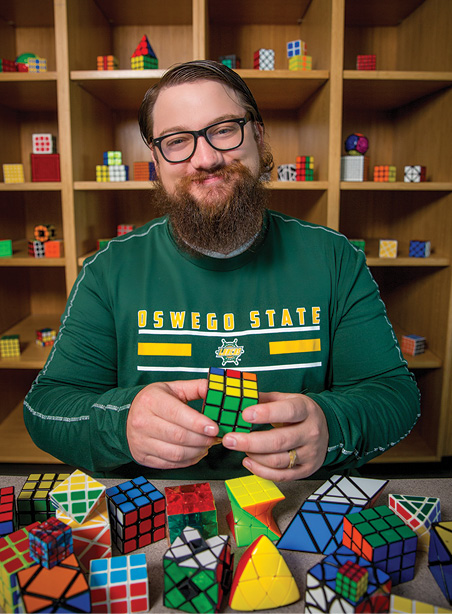
Kenny Roffo ’17 and his collection of rubik’s cubes
Fun Facts about Kenny
- An avid gamer, he created his own Rubik’s cube for his Honors Thesis at SUNY Oswego.
- He can solve the standard Rubik’s cube in under 30 seconds, with his fastest time being 14 seconds, and even once solved the Rubik’s cube blindfolded.
- He met his wife, Alexis, gaming online as a teenager. Their daughter, Layla, is named after the Eric Clapton song.
- While on a camping trip with his family in Fair Haven, he programmed a computerized solver of the hardest Sudoku puzzle in the book to explain to his family the power of programming.
- A lifelong learner and lover of classic rock, he is teaching himself guitar and played Metallica with Dr. Shashi Kanbur and geology major Brice Rebeor ’16 at the Physics Department annual picnic in 2017.
Inspiring Others to Dream
Just before the COVID-19 pandemic emerged, Kenny had arranged to move back to Fulton, N.Y., with his wife, whom they didn’t know at the time was pregnant with their infant daughter, while continuing to work remotely for JPL in Pasadena.
Today, he continues to love the challenge his work provides almost as much as the inspiration he finds in the idea of space exploration.
“I hope to push our technology forward to enable more complex missions,” he said. “It’s hard to make a complex spacecraft if the software you’re running isn’t capable. The better the tools we use, the better our future missions will be.”
And he works on longer range projects—the ones that begin as pie-in-the-sky dreams or impossibilities until he and his
team start to break it down into smaller, more digestible problems.
“He is a very hard worker and is not satisfied with just getting things done,” said his supervisor Marcel Llopis, assistant
section manager for the Planning and Execution Section at JPL. “He wants to understand the why, what and how of things.
This is a very good quality at our laboratory, because the kind of work we do requires that we cover all our bases (who
would want a billion-dollar spacecraft to fail?!). I have also seen him face adversity and when that happens, he perseveres, asks questions and ultimately succeeds regardless of how hard the task is.”
A nod to his childhood dream of becoming a doctor, Kenny said writing code is similar to surgery.
“When you’re editing code, you have to break it,” he explained. “You go in and do your changes, trying to make them as
small as possible. Your goal is to break the code just enough that you can modify it then put it back together. It is like
surgery.”
One of his main projects is trying to update “ancient code” from the 1990s to solve the problem the original code was
written for as well as new challenges. He is currently writing code for a tool that will be used in multi-mission simulations.
For example, Kenny was part of the team that helped create the simulation for the InSight Mars Lander.
“We did a simulation of the lander on Mars literally the day before we executed that plan on Mars,” he said. “So, we were like, ‘what do we want to do tomorrow?’ Here’s a plan. Let’s run it through a simulation. If it looks good, then we’ll uplink it and send it to Mars and the lander. If not, we’ll make changes and simulate it again, and we’ll keep iterating it until we’re happy with the results.”
While his technical contributions are significant, Marcel said Kenny’s most important quality is his role within the team.
“Besides being technically excellent, he is the kind of person that acts as a ‘glue’ in high-visibility, high-performance teams,” Marcel said. “What I mean by that is that when the going gets tough, he can bring the whole team back with a mix of humor and teamwork. He just makes his coworkers happy because of the way he is.”
Currently, Kenny is developing a tool for a mission that might never come to fruition. It involves a mission to explore Europa, one of Jupiter’s moons and one of the most likely places in our solar system that might have life besides Earth.
“He is also extremely flexible in terms of what projects he can work on, which is not something I see every day, and that’s because he is a learner,” Marcel said. “He has joined projects where he had limited to zero background about the work, but after a couple of months, it’s almost miraculous to see how he is able to ‘talk the talk and walk the walk’ like the best of us.
“Kenny has the potential to be one of the best engineers in our laboratory, and it’s been a pleasure to hire him and work with him,” Marcel said.
Divining solutions to challenges that for most of the world are unfathomable is exciting, but that’s not what Kenny finds
the most motivating or the most important aspect of his job.
“The number one reason I feel this work is important is to inspire,” he said. “There are millions of people who are inspired by space exploration and pursue STEM fields as a result. That initial interest is the inspiration that I find really important, because once a kid is interested in the area, they can follow along any number of paths that lead them to find what truly makes them happy in STEM. That’s how we get our new scientists, doctors, engineers—that’s how we make a better world.”
Your Future Landscape Is What You Envision
“I have a single, most important message I like to give to young people who are figuring out what they want to do with their lives: “Do what makes you happy. Chase your dreams. Nobody can decide what makes you happy except you.
Nobody can stop you from achieving your goals except you. Your life is yours, and you are the one who gets to decide
what you do with it. Don’t let statistics or stereotypes get in your way. It’s too easy to convince yourself
that you simply can’t chase your dreams because they are not feasible. “I truly believe that if you want something bad enough, you can make it happen. You just need to form your priorities
around what you want, and never forget to enjoy the journey.”
—Kenny Roffo ’17, NASA software engineer
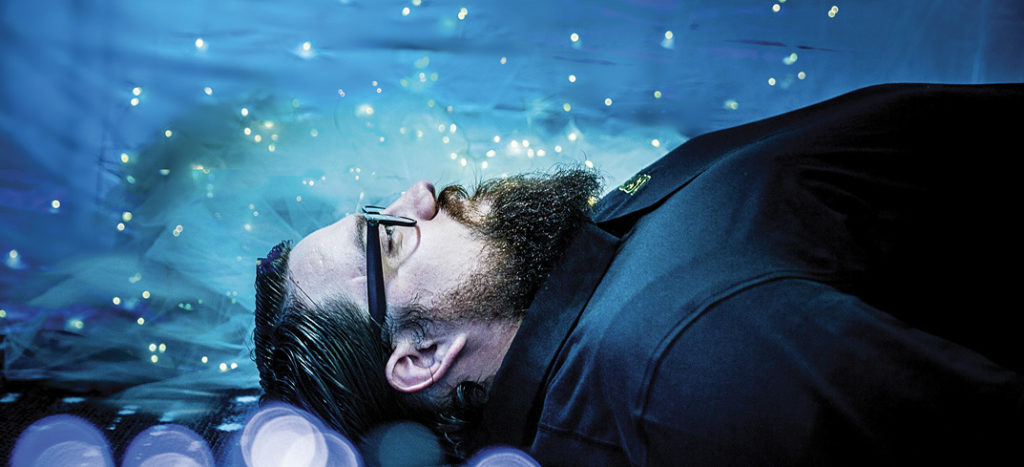
You might also like
More from Featured Content
Vision for the Future
VISION for the Future Peter O. Nwosu began his tenure as the 11th president of SUNY Oswego, building on the solid …
Envisioning the Potential in All Students
ENVISIONING the Potential in All Students Educator donates $2 million in recognition of his Oswego education, in support of future teachers Frank …
A Vision of Support
A VISION of Support Award-winning principal makes an impact on her school through her positivity and commitment When Nicole Knapp Ey ’02 …










